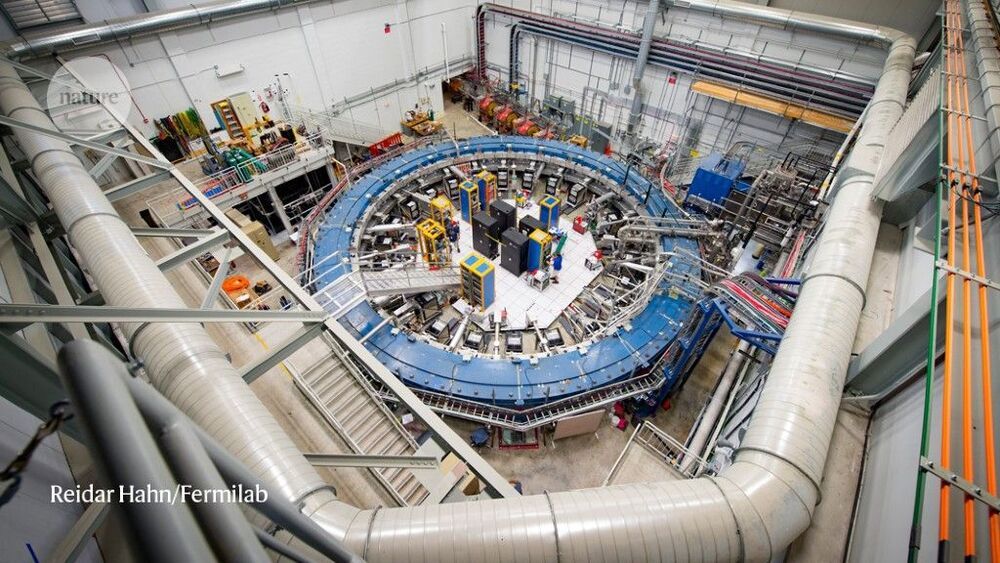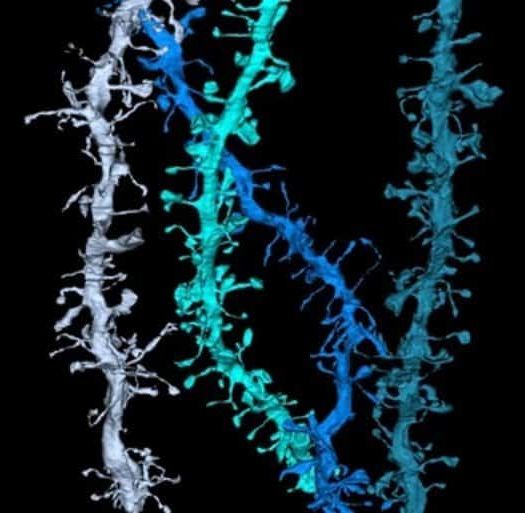‘This means we can start to look at aging as a reversible disease,’ says Prof Shai Efrati; top geriatrician says he is skeptical, and raises concerns.



Livescience.com|By LiveScience
A severe thunderstorm cloud that formed over the Pacific Ocean in 2018 reached the coldest temperatures ever recorded, according to a new study.
The very top of the storm cloud reached a bone-chilling minus 167.8 degrees Fahrenheit (minus 111 degrees Celsius), colder than any storm cloud measured before. Thunderstorms and tropical cyclones, a circular low-pressure storm, can reach very high altitudes — up to 11 miles (18 kilometers) from the ground — where the air is much cooler, according to a statement from the U.K.’s National Center for Earth Observation.

After a two-decade wait that included a long struggle for funding and a move halfway across a continent, a rebooted experiment on the muon — a particle similar to the electron but heavier and unstable — is about to unveil its results. Physicists have high hopes that its latest measurement of the muon’s magnetism, scheduled to be released on 7 April, will uphold earlier findings that could lead to the discovery of new particles.
The Muon g – 2 experiment, now based at the Fermi National Accelerator Laboratory (Fermilab) in Batavia, Illinois, first ran between 1997 and 2001 at Brookhaven National Laboratory on Long Island, New York. The original results, announced in 2001 and then finalized in 20061, found that the muon’s magnetic moment — a measure of the magnetic field it generates — is slightly larger than theory predicted. This caused a sensation, and spurred controversy, among physicists. If those results are ultimately confirmed — in next week’s announcement, or by future experiments — they could reveal the existence of new elementary particles and upend fundamental physics. “Everybody’s antsy,” says Aida El-Khadra, a theoretical physicist at the University of Illinois at Urbana-Champaign.
Ambi Robotics has two flagship products. AmbiSort is a robotic putwall that sorts boxes, polybags, and envelopes from bulk input flow (chutes, totes, and bins) into destination containers (mail sacks, totes). Ambi Robotics claims the system works “over 50% faster than manual labor.” AmbiKit is a robotic system that builds unique kits from any item set. The company said it can be used with subscription boxes, medical kits, gift sets and sample sets for a variety of industries, including cosmetics, food and beverage, consumer goods, medical devices, aerospace and automotive.
The company’s robots are modular, but they do use suction-based gripping. Here’s how AmbiSort works. A depth-sensing camera first looks into a bin of items and analyzes the objects. After determining how to best grasp the item, the robot picks up the item with its suction gripper, holds it up to a barcode scanner, then places the item into a bin. The system then alerts a human operator when a bin is full and ready to be packed.

Summary: All-trans retinoic acid, a vitamin A derivative, induces synaptic plasticity in human cortical neurons.
Source: eLife.
The brain has an enormous capacity to adapt to its environment. This ability to continuously learn and form new memories thanks to its malleability, is known as brain plasticity.


See my recommendations to get Starship landing, videos, and discussions of quantity distance and other aspects of safety and mission assurance that could potentially help assure successful Starship flights.
You can support Galactic Gregs by supporting the sister channel Green Gregs by clicking the links below:
See the Special Deals at My Patriot Supply (great space mission food): www.PrepWithGreg.com.
For gardening in your space habitat (or on Earth) Galactic Gregs has teamed up with True Leaf Market to bring you a great selection of seed for your planting. Check it out: http://www.pntrac.com/t/TUJGRklGSkJGTU1IS0hCRkpIRk1K

# **A Portable, Self-Contained Neuroprosthetic Hand with Deep Learning-Based Finger Control**
Nguyen et al.: https://arxiv.org/abs/2103.
#Robotics #ArtificialIntelligence #HumanComputerInteraction

“Because contrast suppression is orientation-specific and relies on cortical processing, our results suggest that people experiencing a major depressive episode have normal retinal processing but altered cortical contrast normalization,” write the researchers in their paper.
We know that depression is linked to variations in the way our brains are wired, but new research suggests that people who are going through a depressive episode actually see the world around them differently.
And the team behind the study hopes that a better understanding of how visual information is processed in the brains of people with depression could help to inform our treatment approaches in the future.
The researchers wanted to analyze how the cerebral cortex – responsible for receiving messages from the five senses – handled an optical illusion, testing it out with 111 people who were experiencing major depressive episodes and 29 people who weren’t.